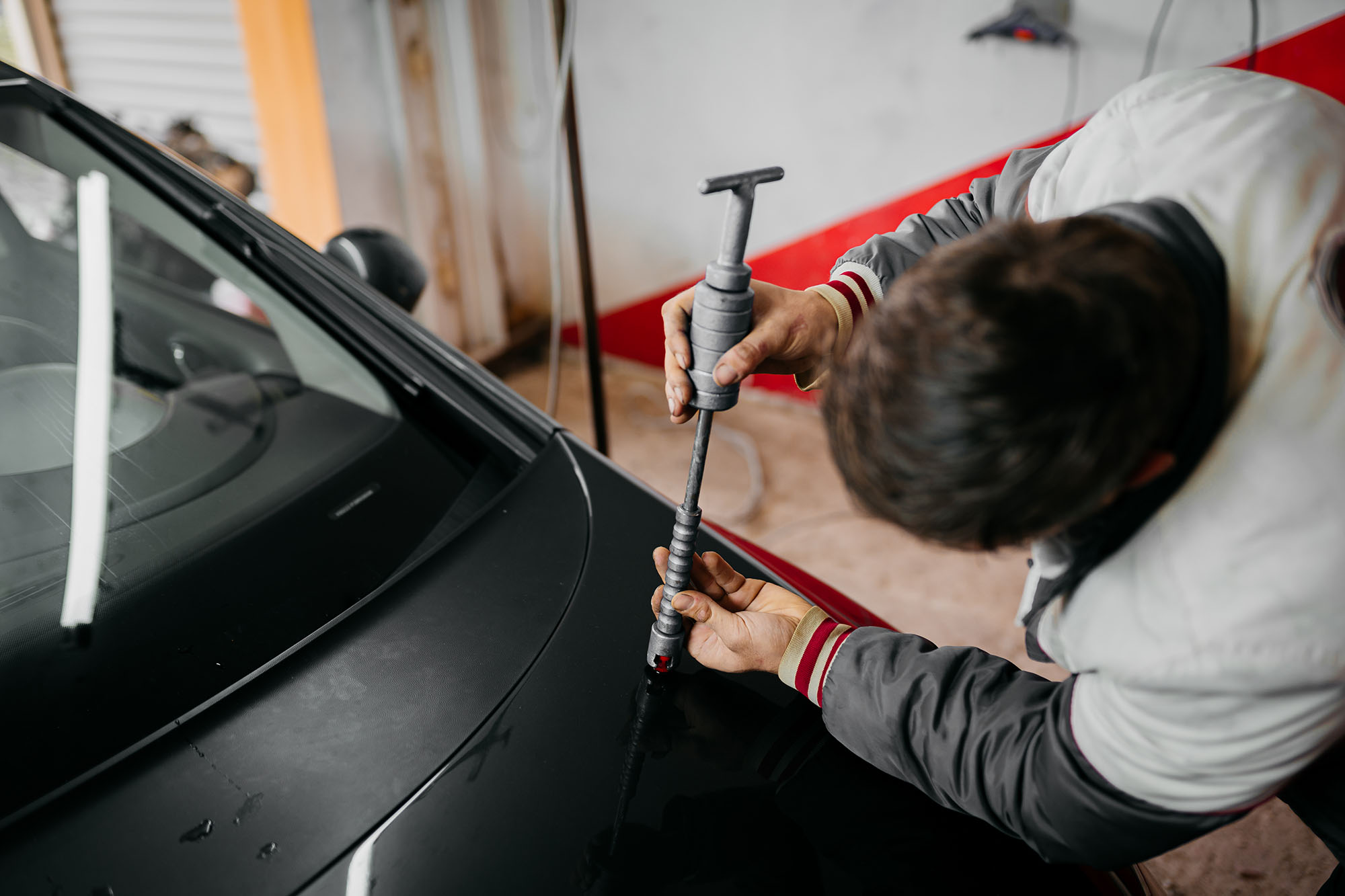What to Know About Paintless Dent Repair
This technique is a quick and affordable way to get your car's body damage back to its like-new condition.
 Getty Images
Getty Images
Paintless dent repair (PDR) is a method for repairing a vehicle's dents and dings that doesn't involve sanding, painting, or panel replacement. Between 80% and 90% of typical dents are candidates for PDR.
How Paintless Dent Repair Works
PDR specialists rely on the fact that any damaged metal panel retains a "memory" of its original shape and can return to its original form if properly manipulated. To this end, PDR technicians work to massage, push, prod, and pull a dent to trigger this memory and spring back into shape.
The most effective approach to achieve this goal is to selectively apply pressure on the dent and surrounding metal. Often, this is accomplished by working from behind the dent to gently push on its backside, where there's no risk of causing further cosmetic damage. This technique can also mean using specific PDR tools on the outside while the dent is gradually worked back into shape.
Some dents can't be accessed from the opposite side due to the panel's construction, position of other vehicle components, or interior trim. In this case, technicians might use a suction cup-type tool or mild glue to pull on the dent from the outside without causing paint damage.
When Paintless Dent Repair Is Useful
PDR is often the go-to solution when facing multiple minor dings caused by rocks, gravel, hail storms, or careless drivers swinging their doors open in a parking lot.
These types of dents are frequently found on large, flat body panels that are relatively easy for a PDR professional to access from behind, such as the front hood, rear trunk, roof, side doors, and fenders.
The PDR approach is also useful for deeper dings caused by soft objects that haven't damaged the vehicle's paint. For example, a dent resulting from a soccer ball being kicked into a door is a strong candidate for PDR.
The Limits of Paintless Dent Repair
Working a dent back into its original shape relies on the strength of that metal's memory. If the metal has been stretched too thin or if the panel is creased, however, it can be more difficult to pop back into form.
Cracked paint in or around the dent will also take PDR off the table, as the finish will have to be resprayed.
The Main Benefits of Paintless Dent Repair
One big benefit of PDR is its reduced cost. Since there's no need to repaint or replace body panels, the repair will likely be less. Since PDR generally takes less time than traditional repairs, the cost will likely be less for labor, too.
Convenience is another benefit of PDR. As with windshield replacement, mobile dent repair is a typical service in many areas, and it means you won't have to travel to a body shop.
Written by humans.
Edited by humans.
 Benjamin Hunting
Benjamin HuntingBenjamin Hunting is a writer and podcast host who contributes to a number of newspapers, automotive magazines, and online publications. More than a decade into his career, he enjoys keeping the shiny side up during track days and always has one too many classic vehicle projects partially disassembled in his garage at any given time. Remember, if it's not leaking, it's probably empty.
Related articles
View more related articles